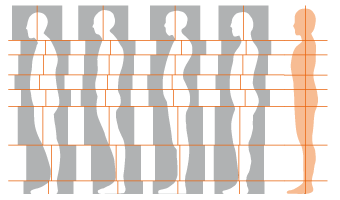
WHAT IS ROLFING?
The term “Rolfing” refers it a system of body education and physical manipulation developed by Dr. Ida P. Rolf. It is a method of structural integration that is the product of 50 years of study by Dr. Rolf.
Rolfing is an original and scientifically validated system of body restructuring and movement education. It releases the body’s segments (legs, torso, arms, etc.) from life-long patterns of tension and bracing and permits gravity to realign them. By doing so, it balances the body.
Through guided movements of the client, the Rolfer slowly stretches and repositions the body’s fascia, which is the supportive wrapping of the body. This restores normal length and elasticity to the network of deep connective fibers of the fascia and allow these changes in the wrapping to occur.
The standard 10-session series may be completed at the rate of one session per week, of spread over a period as long as six months. Rolfing sessions last approximately one and a quarter hours. The results of Rolfing not only lasting, they are progressive. Clients report feeling and looking better and better for several months after their last session.
The basic 10 series does not ever need to be repeated, though people do continue Rolfing later with a three-session series of post-10 work yearly. This supports an aging process that is more comfortable, more graceful and slower than we have seen previously. We suggest a wait of at least six months to a year after the basic 10-series is completed before doing any post-10 work in order to give the body time to make the progressive changes mentioned above.
Athletes, dancers, students of yoga and meditation, musicians, business people, people riddled with chronic stress and pain, people from all walks of life and of all ages come to Rolfing not only for relief from their pains and steress, but also for improved performance in theif professions and everyday activities.
Rolfing can also benefit people in psychotherapy by facilitation a deeper connection to their emotional conflicts, and can effectively deepen such practices such as meditation, yoga and tai chi.
• Posture and alignment
You will sit and stand straighter and taller with less effort. You will breathe more easuly and fully, look and feel lighter.
• Aches and pains
You will likely have less pain and tension in your body as it becomes more balanced and symmetrical, allowing bones and muscles to function properly.
• Flexibility
You will move easier and possess a wider range of motion in the joints. Older people will appreciate the sense of youthfulness that Rolfing produces as it restores balanced movement patterns.
• Performance
You may experience dramatic improvement in the effectiveness and efficiency of movement. You will use less energy for any given movement and perform that movement with more ease and power.
• Stress and Emotional Health
You may experience considerable psychological growth as the emotional history in your body is released. A freer more responsive, and more comfortable body will support you in every part of your life.
Rolfers are trained and certified by the Rolf Institute, headquartered in Boulder, Colorado. The Rolf Institute is the only school accredited to teach Rolfing and is the sole certifying body for Rolfers. It is regulated by the Colorado State Board of community Collages and Occupational Education.
Successful applicants complete a training programme that usually requires two years of study and includes a continuing education programme for six additional years.
The training covers the Biological Sciences, the theory of Rolfing, extensive clinical work under supervision and work with the dynamics of human structure in motion.
The Rolf Institute of Structural Integration was founded in 1971. Its major purposes are to train and provide continuing education for Rolfers, to conduct research on Rolfing, and to provide information to the public about Rolfing.